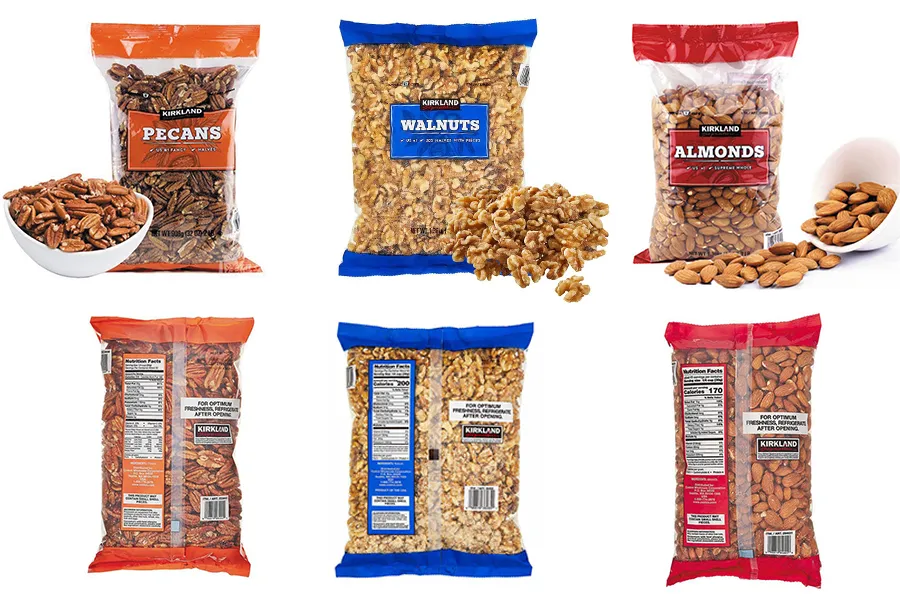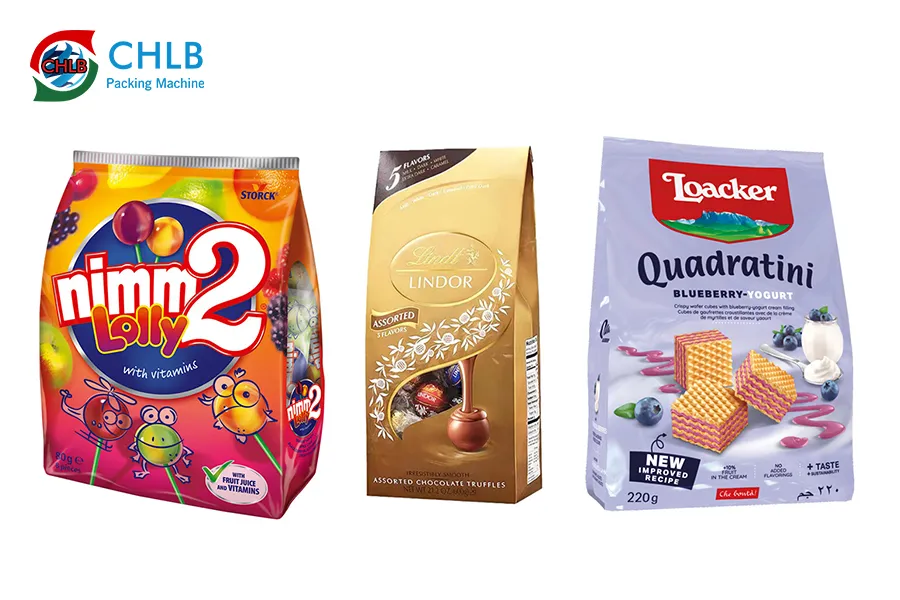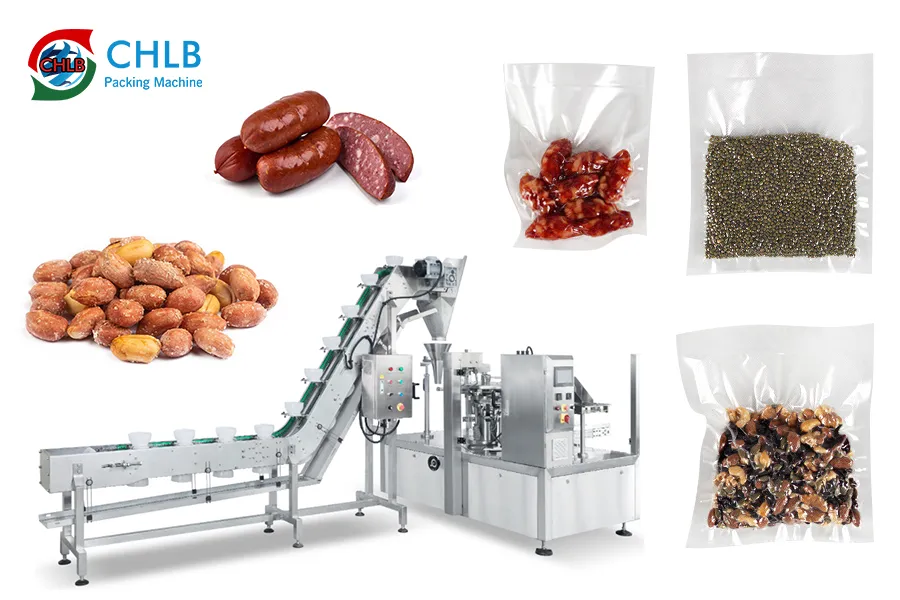A embalagem de alimentos desempenha um papel crucial para garantir a segurança, qualidade, e longevidade de produtos. Ele não apenas protege o conteúdo de elementos externos, mas também ajuda na redução do desperdício de alimentos, melhorando a conveniência, e fornecer informações essenciais aos consumidores. Com tantas opções disponíveis, É importante entender os diferentes tipos de materiais de embalagem e seus benefícios. Neste guia, Vamos explorar os materiais de embalagem de alimentos mais usados, seus papéis, e ofereça dicas para escolher o certo para o seu negócio. Continue lendo para descobrir como otimizar sua embalagem e reduzir custos, mantendo a qualidade.
Papéis de embalagem de alimentos
De acordo com a passagem Da Biblioteca Online Wiley, embalagem de alimentos desempenha um papel vital na vida cotidiana. Vamos continuar lendo para explorar seus papéis essenciais!

Protection and Preservation
Food packaging is key to keeping food fresh, seguro, and long-lasting by acting as a barrier against chemical, biological, and physical threats. Materials like glass, metals, and certain plastics help shield food from moisture, ar, e luz, maintaining quality during transport and storage.
Reducing Food Waste
Good packaging helps cut down on food waste by offering better containment and storage. It prevents spoilage during transit and keeps food fresher for longer. Mais, it makes portioning easier, so consumers only use what they need, reduzindo o desperdício.
Marketing and Communication
Packaging is the face of a product, giving brands a chance to stand out on the shelf. Creative designs and clear labels attract attention while providing essential details like nutritional facts and cooking instructions, helping consumers make smart choices.
Rastreabilidade para segurança
A embalagem moderna geralmente vem com recursos como códigos de barras ou tags RFID que permitem às empresas rastrear alimentos em toda a cadeia de suprimentos. Isso facilita o manuseio de recalls e adiciona uma camada de transparência que constrói a confiança do consumidor.
Conveniência para os consumidores
Os consumidores de hoje precisam de embalagens fáceis de usar. Bolsas selvagens, bandejas seguras de microondas, E designs fáceis de abertura tornam a preparação de alimentos, mantendo-a fresca. A embalagem está evoluindo para atender às necessidades de ocupado, Estilos de vida on-the-go.
Quais são os materiais de embalagem de alimentos mais comumente usados?

Papel, cartão, e papelão são comumente vistos em embalagens de varejo e aplicativos de remessa. No entanto, O plástico continua sendo o material de embalagem de alimentos mais amplamente usado. Sua popularidade deriva de sua natureza leve, acessibilidade, e facilidade de uso. Como vidro, plastic is incredibly versatile and can be molded into a wide range of shapes, making it a top choice for many businesses looking for efficient food packaging solutions.
Types of Food Packaging Materials

1. Embalagem plástica
Plastic packaging is a dominant force in the food industry due to its numerous advantages. And there are some kinds of plastic packaging in the food Here are some key points about plastic packaging:
Polietileno (Educação Física)
Polietileno (Educação Física) is one of the most widely used plastic packaging materials, known for its flexibility and durability. It is commonly used in grocery bags, shrink wraps, and plastic bottles. PE can be further categorized into low-density polyethylene (LDPE) and high-density polyethylene (HDPE), each serving different packaging needs. LDPE is often used for flexible packaging, while HDPE is preferred for stiffer applications.
Polipropileno (Pp)
Polipropileno (Pp) is another popular plastic used in food packaging due to its resistance to heat and moisture. It is commonly found in containers, straws, and food wraps. PP is known for its clarity, making it an excellent choice for packaging products where visibility is essential. Adicionalmente, it has a higher melting point compared to other plastics, allowing for microwave-safe packaging options.
Polyethylene Terephthalate (PET)
Polyethylene Terephthalate (PET) is widely used for beverage containers, food jars, and packaging films. Known for its strength and lightweight properties, PET is also highly recyclable, making it a popular choice for environmentally conscious brands. It offers excellent barrier protection against oxygen and moisture, helping to preserve the freshness and quality of food products.
2. Paper and Cardboard Packaging
The National Library of Medicine and National Center for Biotechnology Information said, paper and paperboards encompass 31% of the global packaging market segment and are most widely used in food packaging. There are two types of it widely used in the paper because of its recyclability.
Kraft Paper
Kraft paper is a strong, durable paper made from unbleached pulp. It is commonly used for food packaging, such as bags, wraps, and boxes. Known for its natural brown color and eco-friendliness, kraft paper is biodegradable and recyclable, appealing to environmentally conscious consumers. Its resistance to tearing and moisture makes it suitable for packaging various food items, including baked goods and snacks.
Papelão ondulado
Corrugated cardboard consists of a fluted inner layer sandwiched between two flat layers, providing excellent strength and protection. It is widely used for shipping boxes and packaging perishable goods. Its lightweight nature helps reduce shipping costs, while its cushioning properties safeguard products during transit. Adicionalmente, corrugated cardboard can be printed on, allowing for branding and marketing opportunities while remaining recyclable and eco-friendly.

3. Glass Packaging
Glass has a long history in food packaging, with the first glass containers appearing around 3000 BC. The production process involves melting a mixture of silica, sodium carbonate, and stabilizers at high temperatures to create a thick liquid, which is then molded into containers.
Glass is non-toxic and chemically inert, ensuring that no harmful substances leach into food. Its impermeability to gases and vapors helps maintain product freshness over time. And its transparency allows consumers to see the contents, and colored glass can protect light-sensitive items.
Despite its advantages, glass packaging has drawbacks, such as its weight, which can increase transportation costs, and its brittleness, making it easy to breakage from impacts or thermal shock.
4. Metal Packaging
Metal is the most versatile packaging option available. It combines exceptional physical protection with outstanding barrier properties, allowing for flexible design and decoration. Adicionalmente, metal packaging is highly recyclable and enjoys strong consumer acceptance. There are three types of metal packaging.
Aluminum
Aluminum is a lightweight and versatile metal commonly used in food packaging, particularly for beverage cans and foil. It offers excellent barrier properties against light and moisture, helping to preserve freshness. Adicionalmente, aluminum is highly recyclable, making it an eco-friendly choice for consumers and manufacturers alike.
Tinplate
Tinplate is steel coated with a thin layer of tin, providing excellent resistance to corrosion and rust. It is widely used for food cans, offering a protective barrier that maintains product quality. Tinplate can be easily printed on, allowing for effective branding and marketing while being recyclable.
Steel
Steel is a strong and durable metal used in packaging for products like canned foods and industrial food containers. It provides excellent protection against external factors and has a long shelf life. A embalagem de aço também é reciclável e pode ser produzida em vários tamanhos e formas para atender às diferentes necessidades de embalagem.

5. Embalagem flexível
A embalagem flexível é uma solução inovadora e adaptável que ganhou popularidade em vários setores. Aqui estão dois tipos de embalagens flexíveis nas indústrias de alimentos.
Filmes de várias camadas
Os filmes de várias camadas são projetados para fornecer proteção aprimorada para produtos alimentícios. Esses filmes combinam vários materiais para criar uma barreira contra a umidade, oxigênio, e luz, o que ajuda a manter a frescura e prolongar a vida útil. Comumente usado em lanches, alimentos congelados, e itens perecíveis, Os filmes de várias camadas são personalizáveis para diferentes aplicações, Garantir a segurança e a qualidade dos alimentos.
Bolsas
As bolsas são uma forma versátil de embalagem flexível amplamente usada na indústria de alimentos. Eles podem ser projetados para vários conteúdos, de lanches to liquids, and often feature resealable closures for convenience. Pouches are lightweight and space-efficient, making them ideal for retail and on-the-go consumption. Adicionalmente, many pouches incorporate features such as steam vents for microwaving and easy-pour spouts, enhancing user experience while maintaining food integrity.
6. Rigid Packaging
Rigid packaging refers to containers that maintain their shape and structure, providing robust protection for the contents inside. This type of packaging is often made from materials such as plastic, glass, metal, ou papelão.
Clamshells
Clamshells are popular rigid packaging options that consist of two halves hinged together, forming a secure enclosure for products. Commonly used for fruits, salads, e assados, clamshells provide excellent visibility while protecting contents from damage. Their design allows for easy stacking and transport, tornando -os convenientes para varejistas e consumidores.
Bandejas e tigelas
Bandejas e tigelas são soluções de embalagem rígidas versáteis usadas para uma variedade de produtos alimentícios, incluindo refeições prontas, lanches, e produtos frescos. Esses contêineres oferecem estabilidade e facilidade de manuseio, frequentemente apresentando compartimentos para separar diferentes itens alimentares. Feito de materiais como plástico, alumínio, ou opções biodegradáveis, bandejas e tigelas podem ser projetadas para uso no microondas, Melhorar a conveniência para os consumidores, mantendo a qualidade dos alimentos.
Dicas para escolher o material certo de embalagem de alimentos
Selecionar o material de embalagem de alimentos apropriado é crucial para manter a qualidade e a segurança do produto. Aqui estão algumas dicas para ajudá -lo a fazer a escolha certa:
Considere o tipo de comida
Pense no tipo de comida que você está embalando. Itens perecíveis como frutas e vegetais need materials that keep moisture and gases out. For dry goods, like pasta or cereals, less protection may be enough. Also, check if the food requires vacuum sealing or refrigeration.
Impacto ambiental
Sustainability matters. Choose packaging that is eco-friendly, reciclável, or biodegradable. Look for certifications that show the material is made with sustainable practices. This not only helps the environment but also attracts eco-conscious customers.
Safety and Regulations
Safety is crucial in food packaging. Ensure that the materials meet local and international safety standards. Make sure they do not contain harmful chemicals that could leach into the food. Using safe packaging builds trust with your customers and keeps them protected.
Different Ways to Reduce Food Packaging Costs
When you package food, there may be food packaging costs. How we reduce and cut the cost? Here are some ways for you to take.
Consider Alternative Packaging Materials
You should look for less expensive materials that still effectively protect your food products. Options like biodegradable films or simple cardboard can help lower costs while providing the necessary protection. It is essential to research new materials that fit your budget and product needs.
Use Recyclable and Reusable Packaging
Choosing packaging that can be recycled or reused is a smart move. This not only cuts costs but also appeals to eco-conscious customers. Reusable containers can lead to significant savings over time, as they reduce the need for new packaging materials.
Optimize Packaging Design
You can simplify your packaging design to use less material. Essa abordagem pode reduzir os custos de produção e taxas de envio. É benéfico considerar projetos que minimizam o desperdício enquanto ainda fornecem proteção adequada para o produto.
Aproveite a compra em massa
A compra de materiais de embalagem a granel permite que você aproveite os descontos. Essa estratégia pode reduzir significativamente os custos ao longo do tempo. No entanto, Você deve ter espaço de armazenamento suficiente e que os materiais não expirarão antes de usar.
Faça parceria com consultores de embalagem
Trabalhar com especialistas em embalagens pode ajudá-lo a encontrar soluções econômicas. Eles podem ajudá -lo a simplificar seu processo de embalagem e sugerir materiais que economizam dinheiro sem sacrificar a qualidade.
Monitorar e revisar os custos de embalagem regularmente
É importante acompanhar suas despesas de embalagem. Revisões regulares podem ajudá -lo a identificar tendências e identificar áreas onde as economias podem ser feitas. Ajustar suas estratégias conforme necessário garantirá que você esteja sempre minimizando os custos de maneira eficaz.
Takeaway -chave
Materiais de embalagem de alimentos - seja plástico, papel, glass, ou metal - todos desempenham um papel fundamental na proteção e apresentação de seus produtos. Escolher o certo depende do seu tipo de comida, objetivos ambientais, e requisitos de segurança.
Se você está procurando conselhos especializados sobre embalagens, Chlbpack está aqui para ajudar. Podemos guiá -lo pelo processo e encontrar o melhor, soluções mais acessíveis para o seu negócio. Sinta -se à vontade para Alcance o chlbpack a qualquer momento para suporte personalizado!














